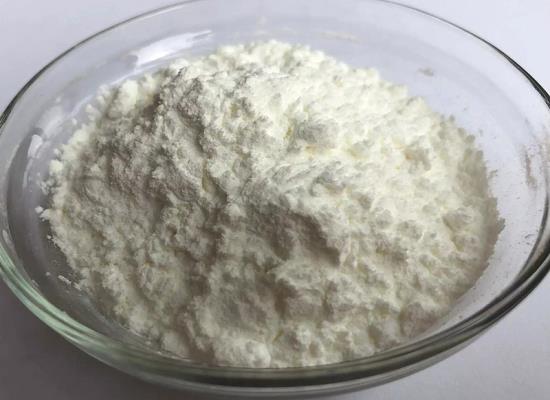5-(4-phenoxyphenyl)-7H-pyrrolo[2,3-d]pyriMidin-4-ylaMine: quantification, mechanism of action and applications
General Description
5-(4-phenoxyphenyl)-7H-pyrrolo[2,3-d]pyriMidin-4-ylaMine is an impurity in Ibrutinib with the chemical structure C32H42BrCl2N7O4. The quantification of 5-(4-phenoxyphenyl)-7H-pyrrolo[2,3-d]pyriMidin-4-ylaMine can be accomplished using HPLC or LC-MS/MS. In HPLC, the sample and standard compounds are separated through liquid chromatography, and UV or fluorescence detectors are utilized for quantitative measurement. The process involves sample preparation, chromatographic separation, detector detection, and data processing. LC-MS/MS, on the other hand, is a more sensitive method that integrates liquid chromatography with tandem mass spectrometry. Following chromatographic separation, the sample enters a tandem mass spectrometer for precise quantification through mass-to-charge ratio detection and multi-stage mass spectrometric analysis. Sample preparation, liquid chromatographic separation, tandem mass spectrometry detection, and data processing are involved in LC-MS/MS analysis. Accurate results necessitate strict control of experimental conditions and appropriate instrument and reagent selection. Method validation, which includes assessing linearity range, precision, and accuracy, assists in confirming the reliability of the chosen method. Further clinical research and evaluation are essential to comprehensively understand the therapeutic efficacy of 5-(4-phenoxyphenyl)-7H-pyrrolo[2,3-d]pyriMidin-4-ylaMine in chronic lymphocytic leukemia (CLL) and lymphoma, including marginal zone lymphoma and mantle cell lymphoma.
![Figure 1. 5-(4-phenoxyphenyl)-7H-pyrrolo[2,3-d]pyriMidin-4-ylaMine.png Article illustration](/NewsImg/2023-07-19/6382539295613056606096344.jpg)
Figure 1. 5-(4-phenoxyphenyl)-7H-pyrrolo[2,3-d]pyriMidin-4-ylaMine
Quantification
The quantification of 5-(4-phenoxyphenyl)-7H-pyrrolo[2,3-d]pyriMidin-4-ylaMine as an impurity in Ibrutinib can be achieved using HPLC or LC-MS/MS. In HPLC, the sample and standard compounds are separated through liquid chromatography, and UV or fluorescence detectors are used for quantitative measurement. The steps include sample preparation, chromatographic separation, detector detection, and data processing. LC-MS/MS is a more sensitive method combining liquid chromatography with tandem mass spectrometry. After chromatographic separation, the sample enters a tandem mass spectrometer for precise quantification through mass-to-charge ratio detection and multi-stage mass spectrometric analysis. Sample preparation, liquid chromatographic separation, tandem mass spectrometry detection, and data processing are involved in LC-MS/MS analysis. Strict control of experimental conditions and the selection of appropriate instruments and reagents are necessary to ensure accurate results. Method validation, including assessing linearity range, precision, and accuracy, helps confirm the reliability of the chosen method. 1
Mechanism of action
5-(4-phenoxyphenyl)-7H-pyrrolo[2,3-d]pyriMidin-4-ylaMine, a selective Bruton's tyrosine kinase (BTK) inhibitor, functions by blocking the phosphorylation of BTK. The B-cell receptor (BCR) signaling pathway is dependent on BTK, a key kinase involved in various processes of B-cell proliferation, differentiation, migration, and survival. In malignant B-cell diseases, elevated BTK expression contributes to disease progression. By inhibiting BTK phosphorylation, 5-(4-phenoxyphenyl)-7H-pyrrolo[2,3-d]pyriMidin-4-ylaMine disrupts the BCR signaling pathway, which ultimately leads to an anti-cancer effect. This targeted approach can impede the growth and spread of cancer cells associated with these diseases. Through its action on BTK, 5-(4-phenoxyphenyl)-7H-pyrrolo[2,3-d]pyriMidin-4-ylaMine provides a promising therapeutic strategy for managing malignant B-cell diseases. 2
Applications
Chronic lymphocytic leukemia
5-(4-phenoxyphenyl)-7H-pyrrolo[2,3-d]pyriMidin-4-ylaMine is a selective Bruton tyrosine kinase (BTK) inhibitor that disrupts the B-cell receptor (BCR) signaling pathway by inhibiting the phosphorylation of BTK. This drug has demonstrated potential activity in the treatment of chronic lymphocytic leukemia (CLL). CLL is a common type of leukemia that typically requires long-term treatment and management. Due to the critical role of BTK in B-cell proliferation, differentiation, migration, and survival, elevated expression levels of BTK contribute to disease progression and worsening in CLL. By inhibiting the phosphorylation of BTK, 5-(4-phenoxyphenyl)-7H-pyrrolo[2,3-d]pyriMidin-4-ylaMine can interrupt the BCR signaling pathway, thereby controlling the proliferation and dissemination of cancer cells and alleviating the patient's condition. In summary, 5-(4-phenoxyphenyl)-7H-pyrrolo[2,3-d]pyriMidin-4-ylaMine, as a promising therapeutic strategy, can be utilized for managing CLL and may have positive implications for other related types of leukemia. However, detailed clinical research and evaluation are still necessary. 3
Lymphoma
5-(4-phenoxyphenyl)-7H-pyrrolo[2,3-d]pyriMidin-4-ylaMine, as an impurity of Ibrutinib, also possesses potential therapeutic activity against lymphoma. Marginal zone lymphoma is a rare type of lymphoma that typically occurs in organs and tissues rich in lymphoid tissue. 5-(4-phenoxyphenyl)-7H-pyrrolo[2,3-d]pyriMidin-4-ylaMine can inhibit the phosphorylation of BTK, suppressing the proliferation and dissemination of cancer cells, thus alleviating patients' condition. Mantle cell lymphoma is a subtype of non-Hodgkin's lymphoma that often requires long-term treatment and management. 5-(4-phenoxyphenyl)-7H-pyrrolo[2,3-d]pyriMidin-4-ylaMine can inhibit the phosphorylation of BTK, thereby blocking the BCR signaling pathway, controlling the proliferation and dissemination of cancer cells, and mitigating patients' symptoms. 4
Reference
1. Prasad SS, Mohan GVK, Babu AN. A QUALITY BY DESIGN APPROACH FOR DEVELOPMENT OF SIMPLE AND ROBUST REVERSED PHASE STABILITY INDICATING HPLC METHOD FOR ESTIMATION OF IBRUTINIB AND ITS IMPURITIES. Rasayan Journal of Chemistry, 2019, 03.
2. Honigberg LA, Smith AM, Sirisawad M, Verner E, Loury D, Chang B, Li S, Pan Z, Thamm DH, Miller RA, Buggy JJ. The Bruton tyrosine kinase inhibitor PCI-32765 blocks B-cell activation and is efficacious in models of autoimmune disease and B-cell malignancy. Proc Natl Acad Sci U S A, 2010, 107(29):13075-13080.
3. Wang ML, Rule S, Martin P, Goy A, Auer R, Kahl BS, Jurczak W, Advani RH, Romaguera JE, Williams ME, Barrientos JC, Chmielowska E, Radford J, Stilgenbauer S, Dreyling M, Jedrzejczak WW, Johnson P, Spurgeon SE, Li L, Zhang L, Newberry K, Ou Z, Cheng N, Fang B, McGreivy J, Clow F, Buggy JJ, Chang BY, Beaupre DM, Kunkel LA, Blum KA. Targeting BTK with ibrutinib in relapsed or refractory mantle-cell lymphoma. N Engl J Med, 2013, 369(6):507-516.
4. Pellegrini L, Novak U, Andres M, Suter T, Nagler M. Risk of bleeding complications and atrial fibrillation associated with ibrutinib treatment: A systematic review and meta-analysis. Crit Rev Oncol Hematol, 2021, 59:103238.
See also
Lastest Price from 3-(4-Phenoxyphenyl)-1h-pyrazolo[3,4-d]pyrimidin-4-amine manufacturers
![330786-24-8 5-(4-phenoxyphenyl)-7H-pyrrolo[2,3-d]pyriMidin-4-ylamine](/ProductImageEN1/2025-08/Small/f4dd109f-3c31-45bd-9b70-1b1894ad0dfa.gif)
US $0.00-0.00/kg2025-08-29
- CAS:
- 330786-24-8
- Min. Order:
- 1kg
- Purity:
- 99%
- Supply Ability:
- 1
![330786-24-8 5-(4-phenoxyphenyl)-7H-pyrrolo[2,3-d]pyrimidin-4-ylaMine](/ProductImageEN/2022-12/Small/a19839a1-b5bc-4242-8308-3293bb3389b0.jpg)
US $0.00/KG2025-04-21
- CAS:
- 330786-24-8
- Min. Order:
- 1KG
- Purity:
- 98.0%
- Supply Ability:
- 10kg/month
![330786-24-8 Quantification of 5-(4-phenoxyphenyl)-7H-pyrrolo[2,3-d]pyriMidin-4-ylaMinemechanism of 5-(4-phenoxyphenyl)-7H-pyrrolo[2,3-d]pyriMidin-4-ylaMineapplications of 5-(4-phenoxyphenyl)-7H-pyrrolo[2,3-d]pyriMidin-4-ylaMine](https://www.chemicalbook.com/CAS/20150408/GIF/330786-24-8.gif)

